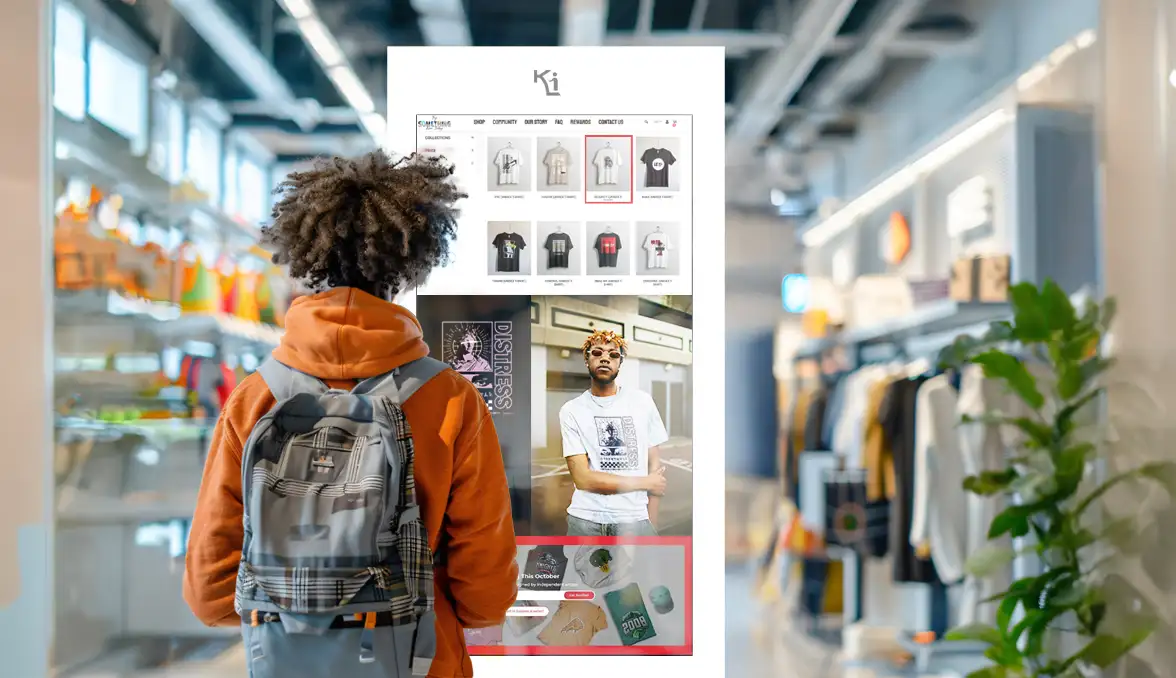In an increasingly competitive marketing environment, attracting customers’ attention is just the first step. But how do you turn that attention into real sales? This article explores the role of digital totems as powerful conversion levers, explaining why simple engagement is not enough and how interactive tools can guide the user to purchase.
It’s not enough to attract: the real strength is in conversion
In an increasingly competitive market, attracting customers is not enough. Many companies focus on capturing the public’s attention through channels such as social media, digital advertising, mobile apps and interactive totems. However, the real challenge is not simply obtaining visibility, but transforming initial interest into concrete actions: purchases, reservations or requests for information. Many companies invest time and resources to make their brand known, but without a clear conversion strategy, the attention generated risks remaining a momentary advantage, without concrete and lasting effects. This is why it becomes essential to integrate tools that not only attract, but convert: among these, interactive digital totems emerge as real conversion levers.
From Attention to Conversion: The Fundamental Role of Interactive Digital Totems
Attention is just the first step. Every day, consumers are exposed to countless messages on social media, in print, and through digital ads. Capturing the right attention is crucial, but the real challenge is converting. 
According to recent research, 80% of customers said they entered a store thanks to a digital screen, and 59% of those who view an interactive screen want to explore the offer further. This data clearly shows that conversion requires more than a visual appeal: you need to create an experience that leads the customer to action. Brands that invest in engagement tools like digital kiosks respond to this need, transforming simple moments of attention into targeted interactions that drive the purchase.
Interactive digital totems as allies to convert attention into sales
Interactive digital totems are an ideal solution for combining attractiveness with conversion capacity. These devices are not simply screens that transmit visual information: they are real conversion levers, designed to capture attention and guide the customer to take action. Interactive digital totems perform two crucial functions:
- Visual and attractive aspect: their scenographic presence and dynamic content immediately capture attention.
Videos, moving images and captivating graphics arouse curiosity and interest, fundamental elements to involve those in front of the screen.
A well-positioned totem in a point of sale, a fair or an event attracts passers-by and invites them to interact with the proposed content. - Action and interactivity aspect : in addition to capturing attention, totems are designed to guide the user to take an immediate action. Thanks to touch screen functionality, QR code, or direct links to eCommerce and booking systems, the totem allows the customer to explore, compare products, and, above all, make purchases or reservations in just a few touches.
This reduces the distance between initial interest and purchase, making conversion easier.
Merging physical and online stores to enhance omnichannel
Another benefit of digital kiosks is their ability to integrate the online and offline experience . In an increasingly omnichannel world, these devices allow customers to seamlessly transition from the physical store to the online store. Kiosks allow customers to view in-store products, discover digital promotions, or complete orders without leaving the store. This integration not only improves the shopping experience, but ensures that every interaction leads to tangible conversions , both in the physical and digital world. For a deeper dive into this integration between physical and digital, read the article Let’s Get Phygital .
Multichannel vs. Omnichannel: What’s the Difference?
In this context, it is important to distinguish between multichannel and omnichannel, two approaches that, although similar, differ substantially:
- Multichannel: The company uses multiple touchpoints (social media, apps, chatbots, kiosks) to reach customers. However, each channel is often managed separately, without an integrated system of data and behaviors. This approach is fragmented and limited in offering a continuous experience.
- Omnichannel: Here the company not only connects the touchpoints, but creates an interconnected and coherent system. Data flows between channels, allowing the customer to have a continuous experience, moving seamlessly from one channel to another. This strengthens the relationship with the brand and increases the probability of conversion.
In conclusion
Capturing attention is just the beginning, but driving the customer to conversion is the real goal. Kiosk’s interactive digital kiosks are designed to do just that: attract, engage and convert , in one effective tool. Their combination of visual and interactive power makes them indispensable for any company aiming to improve sales results.
Learn more about how Kiosk digital totems can turn attention into action.
 |
Talk to one of our specialistsWant to find out how digital totems can turn attention into conversions for your business? Schedule a call with us to discuss the customized solutions best suited to your business! |
 |
Talk to one of our specialistsWant to find out how digital totems can turn attention into conversions for your business? Schedule a call with us to discuss the customized solutions best suited to your business! |




